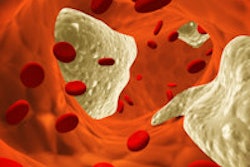Monday, November 30 | 11:20 a.m.-11:30 a.m. | RC215-14 | Arie Crown Theater
Researchers from Memorial Sloan Kettering Cancer Center have found that annual breast MRI is a key tool for detecting small, node-negative, invasive cancers in women at high risk for the disease.Presenter Dr. Janice Sung and colleagues performed a retrospective review of breast cancers found among 18,065 screening MRI exams between January 2005 and December 2010. The researchers reviewed patients' medical records for risk factors such as a family or personal history of breast cancer, BRCA status, and prior high-risk lesions, and they calculated the intervals between when the cancer was detected on MRI, the patient's baseline exam, and her most recent breast MRI screening.
Of the total screening MRI exams performed during the study period, 170 cancers were found in 167 women. Of these, 63 were detected on baseline MRI. The remaining 107 cancers were found on a subsequent breast MRI; 81 of these were invasive (with a mean size of 0.7 cm) and nine were node-positive.
Of the 107 cancers, 82 (77%) had not been detected within 16 months prior to the MRI exam that found the cancer, and 17 were identified at one-year follow-up, 25 at two-year follow-up, and 65 at additional years of follow-up. These results were independent of risk factors, according to Sung and colleagues.
The fact that the majority of cancers found on subsequent breast MRI were not identified a year earlier suggests the need for annual screening in this population, the researchers concluded.





















